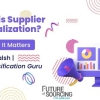It’s no secret that marketing and technology have become deeply entwined over the past two decades. Largely because of digital technologies, the methods, tactics and channels used by marketers have changed dramatically.
Meanwhile, the number of marketing technology tools has increased exponentially. The inaugural (2011) version of Scott Brinker’s marketing technology landscape graphic contained about 150 solution providers. The 2020 version of the graphic includes 8,000 technology solutions. So the marketing technology landscape has grown by an astounding 5,233% since 2011.
The expanding role of technology in marketing means that marketing leaders are now making substantial investments in technology tools and related services. Last fall, research by Gartner found that, on average, companies were spending 26% of their total marketing budget on technology. To put this in perspective, marketers were spending as much on technology as they were spending on media and more than they were spending with agencies.
The reality is, the discovery, evaluation and acquisition of technology tools and related services touch virtually every aspect of marketing. And because technology now plays such a vital role in marketing, it’s critical for marketers and marketing procurement professionals to get technology decisions right.
Fortunately, there is an abundance of resources describing the process for evaluating business software applications. For example, many providers of marketing software solutions have published “buying guides” that can help marketers and marketing procurement professionals navigate the software selection process.
Having a sound process for evaluating and selecting marketing software is obviously important, but it’s even more important to understand what attributes will make an application a good choice for your company. There are four core attributes that should guide the decisions you make throughout the acquisition process.
Purpose
For a marketing software application to be a good choice, it must enable (or, more accurately, help enable) your company to solve important business problems or achieve important business objectives. Therefore, every software acquisition process should begin with a clear and documented hypothesis describing how a given type of software would help you improve business performance.
Value
To be a sound investment for your business, a marketing software application must create meaningful value for your company. The “gold standard” for evaluating prospective investments in most organizations is return on investment (ROI).
Unfortunately, it can be very difficult to accurately estimate the ROI that a marketing software application will produce. For one thing, an individual marketing software application is usually one component of an ecosystem of interdependent martech applications. It may be possible to accurately estimate the ROI produced by the ecosystem as a whole, but it can be nearly impossible to accurately predict the ROI attributable to an individual component.
Under these circumstances, it’s essential to describe the expected benefits of a prospective software application qualitatively. A qualitative description of the expected benefits will be a useful decision-making guide when a quantitative ROI estimate isn’t available.
Fit
No matter how technologically advanced or capable a marketing software application may be, it will not be a good choice if it doesn’t “fit” your company’s circumstances. When you’re selecting a new marketing software application, you should look for three types of fit.
- Fit with your primary use cases – The software you are evaluating should be particularly well suited for the main tasks your company will use the application to perform.
- Fit with your other martech applications – The prospective software application should be easy to integrate with other relevant components of your existing martech stack.
- Fit with your internal capabilities – Your ability to maximize the potential benefits of a marketing software application depends on having the right internal capabilities such as technical expertise, available staff time and appropriate data. For example, some marketing software applications provide extensive flexibility but require significant customization to take advantage of that flexibility. If you don’t have the internal expertise to perform the customization, the potential flexibility won’t be of much value. Therefore, the software you select should be aligned with your internal capabilities.
Functionality
The fourth core attribute of a marketing software application is probably the most obvious one – functionality. When evaluating marketing software, it’s important to consider two aspects of functionality. Technical functionality includes the scope of tasks the software can perform, the underlying architecture of the software, and security and administrative features.
The second dimension of functionality is ease of use, which is an vital characteristic of marketing software for two primary reasons. First, when a software application is easy to use, members of your marketing team can become proficient with it quickly and without extensive training. And second, software that is easy to use is more likely to be used on a consistent basis. So ease of use encourages widespread adoption.









